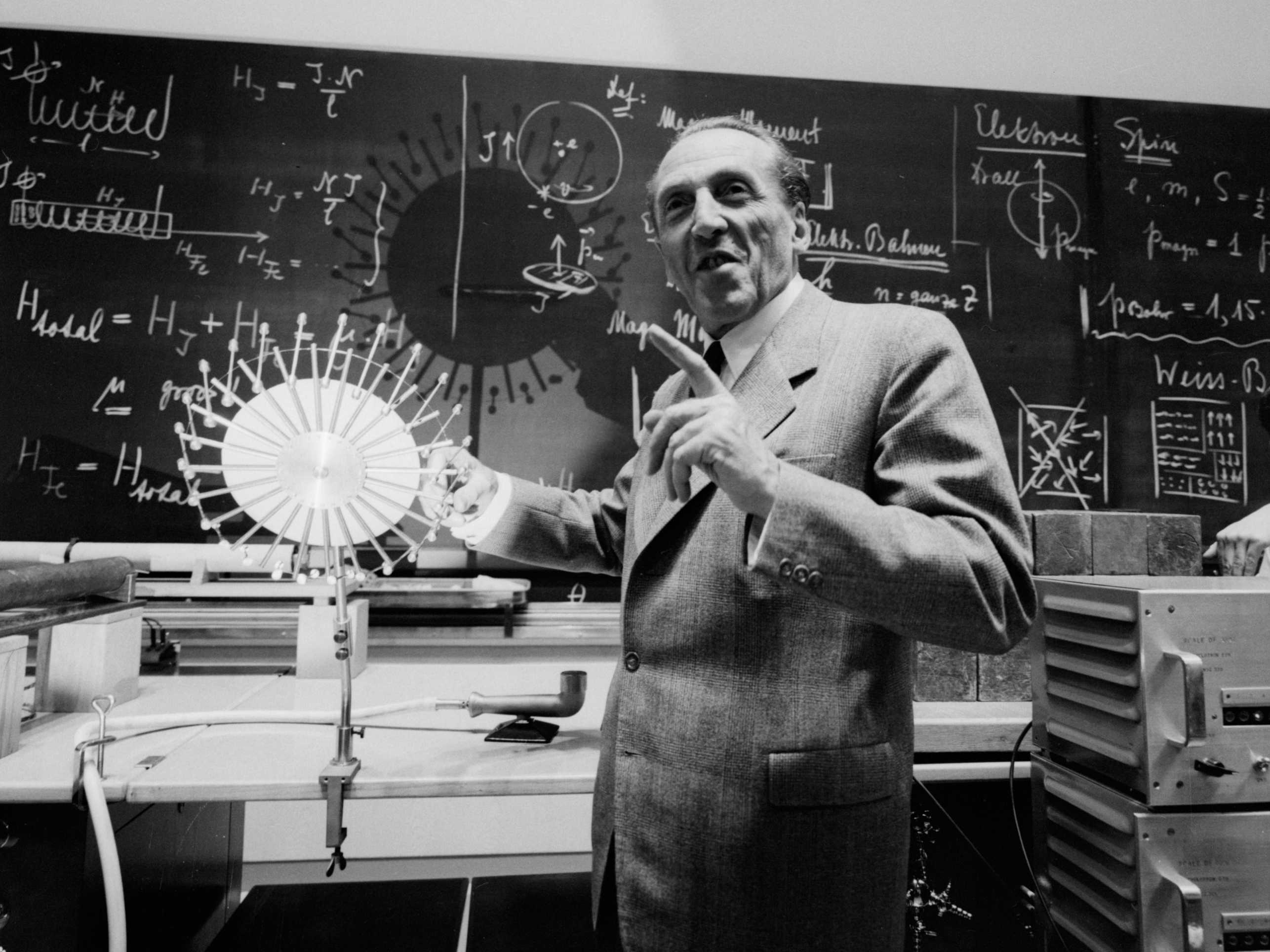1911-1968: The flagship of national science
As an institute of technology, ETH Zurich had gained a considerable degree of academic independence that enabled it to establish stable cooperative partnerships with the state and with commerce. The key to the university’s new relationship with its environment was the successful combination of theoretically formulated and experimentally tested knowledge.

Key data from this era:
The growing importance of applied and fundamental research
Applied and fundamental research became increasingly important compared to teaching. This shift meant that the acquisition of state-of-the-art equipment was an indispensable factor in the university’s scientific success, and this required new financing models.
At the same time, there were growing doubts over whether the ideal of unity between all the sciences was achievable. Not only did the natural sciences and humanities seem to be growing further and further apart as they became increasingly specialised, but so too did individual disciplines within natural sciences and technology. With a generalisation of methods and models becoming impossible, the idea of linking together the various forms of knowledge in a kind of chain was developed. According to one ETH Zurich rector in the interwar period, this chain led from mathematics right through to the nation’s economic and cultural interests, taking in crystallography and materials science along the way. Organising this chain required a great deal of imagination.
After the First World War, ETH Zurich stepped up its cooperation with industry via co-funded institutes. Through the Laboratory of Hydraulics (1930) or the Department for Industrial Research (AFIF, 1937), for example, ETH Zurich had links to a collective safety net made up of external connections with federal, cantonal and industrial bodies.
From economic growth to academic growth
At the National Exhibition in Zurich in 1939, ETH Zurich was omnipresent – not just physically in terms of apparatus, but also ideologically in terms of scientific ideas. It had already been involved in the “national education system” as part of the “intellectual national defence programme” (“Geistige Landesverteidigung”) since 1936. Eventually Arthur Rohn, President of the ETH Zurich board, developed the idea for an innovative science policy venture which would lead – at least indirectly – to the establishment of the Swiss National Science Foundation. All in all, ETH Zurich sailed along with remarkable success as the flagship of the Federal State, boosted by a mixture of patriotic spirit, national defence interests and consensus democracy. In the process, it transformed economic growth into academic growth – with the constant reminder of its great importance for the prosperity of all.
Throughout this period, ETH Zurich played the role of a national information centre, keeping a meticulous record of what was going on in the world of science and in society in general. In the 1950s, for example, it examined the financial impact of local modernisation, such as water pollution, and also became involved in international collaborative research projects with success. In the early 1960s, however, it gradually became clear that the Swiss success model was no longer keeping up with the times.